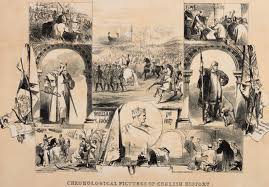History & Significance of Phra That Chae Haeng | Sacred Buddhist Temple Thailand
Introduction
Perched gracefully on a low hill in Nan Province, Northern Thailand, Phra That Chae Haeng stands as one of the most revered Buddhist temples in the region. This sacred stupa, with its striking golden chedi that glistens under the tropical sun, is more than just a religious monument—it is a symbol of spiritual devotion, cultural pride, and centuries-old tradition. Its history intertwines with the arrival of Buddhism in northern Thailand, while its significance continues to resonate deeply with both local communities and pilgrims from across Asia.
Historical Background
The origins of Phra That Chae Haeng date back to the 14th century, during the reign of King Chao Phu Kheng. According to historical records, the chedi was built in 1355 AD to enshrine a sacred relic of the Buddha, specifically a strand of his hair and a piece of his bone. These relics were brought to Nan from Sukhothai, a powerful kingdom and cultural center of the time.
The temple’s construction coincided with the flourishing of the Lanna Kingdom, when Theravada Buddhism was spreading rapidly across northern Thailand. The architecture, therefore, reflects both Lanna artistry and local Nan influences, blending intricate craftsmanship with symbolic Buddhist elements.
Architectural Features
The centerpiece of the temple is the 55-meter tall golden chedi, a masterpiece of Lanna architecture. Covered in gleaming gold leaf, the stupa rises majestically against the backdrop of green hills, symbolizing the Buddhist path toward enlightenment.
Surrounding the chedi are elegant viharns (assembly halls) decorated with wood carvings, naga serpents, and lotus motifs. The temple grounds also include sacred statues, murals depicting Buddhist stories, and traditional pavilions where monks chant and devotees gather for rituals. Each design element carries profound meaning, reflecting both religious devotion and artistic heritage.
Religious Significance
Phra That Chae Haeng holds a place of great spiritual importance, especially for people born in the Year of the Rabbit, as the temple is considered their zodiac stupa. Pilgrims believe that paying respects here brings merit, protection, and blessings for prosperity and peace of mind.
Throughout the year, the temple becomes a vibrant center for Buddhist festivals, with the most notable being Visakha Bucha Day and local merit-making ceremonies. During these events, devotees circle the chedi with candles, flowers, and incense, creating a powerful spiritual atmosphere that connects the community to centuries of Buddhist tradition.
Cultural and Community Role
Beyond its religious role, Phra That Chae Haeng is also a cultural treasure. It stands as a reminder of Nan’s historical independence before merging into the greater Siamese kingdom. Local legends, folk tales, and oral traditions often reference the temple, emphasizing its importance as a cornerstone of identity and pride for the people of Nan.
The temple also plays a role in modern community life. It attracts not only Thai pilgrims but also visitors from neighboring Laos, Myanmar, and beyond, strengthening cultural exchange and cross-border ties. Tourism centered around Phra That Chae Haeng helps sustain local crafts, markets, and traditions, ensuring that cultural heritage remains alive.
Symbol of Continuity
For more than six centuries, Phra That Chae Haeng has stood resilient through wars, political changes, and modernization. Its golden chedi continues to shine as a symbol of spiritual continuity. Each generation of devotees adds new layers of devotion, ensuring the temple remains a living space rather than a relic of the past.
In this way, the temple embodies the Buddhist principle of impermanence while simultaneously representing the enduring values of faith, compassion, and cultural identity.
Conclusion
The history and significance of Phra That Chae Haeng extend far beyond its architectural beauty. It is a sacred Buddhist temple that enshrines holy relics, symbolizes the spiritual aspirations of the Lanna people, and continues to serve as a vibrant cultural landmark in Thailand. Whether approached as a site of pilgrimage, a historical monument, or a cultural treasure, Phra That Chae Haeng offers a profound glimpse into the heart of Thai spirituality and heritage.
